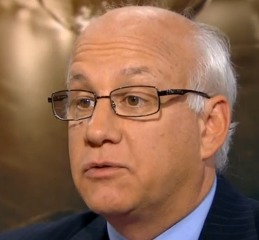Apple’s (AAPL) share price has been on the rebound ever since Carl Icahn’s now-infamous tweet reignited interest in the company. Still, the stock is down 30% from its all-time highs it hit last year, and there is a general consensus that the company’s days of rapid growth are behind it.
A common question I hear asked is whether Apple is destined to follow in Microsoft’s (MSFT) footsteps, suffering years of underperformance. Microsoft, like Apple, once held the distinction of being the most valuable company in American history. (And adjusted for inflation, Microsoft’s 1999 high-water mark still holds the title.) Today, Microsoft’s share price is still 40% below its dot-com-era peak… 13 years later. Ouch.
There are certainly some similarities. Both companies were dominant in their respective areas of expertise: Microsoft in PC operating systems and office productivity software and Apple in smart mobile devices. Both companies were led by brilliant technology visionaries in their heyday, and now both are led by less-imaginative “company men,” at least until Steve Ballmer’s replacement is announced. And both, once they grew to a certain size, found their markets mature or close to maturity with fewer obvious avenues for growth.
But there is one major difference between the two stocks: valuation.
In 1999, Microsoft’s valuation had reached absurd, nosebleed levels that were (sadly) typical for the time. Microsoft peaked with a trailing price/earnings ratio of over 70 and a price/sales ratio of over 20.
We’re talking about the peak of one of the greatest stock bubbles in history. From those levels, Microsoft was doomed to years of stock price correction, regardless of how successful the company operationally. Ballmer can be faulted for missing the boat on the mobile revolution and for a generally sloppy history of acquisitions over his tenure. But Microsoft’s stock underperformance since 2000 is a product of an unrealistically high starting price.
Let’s now take a look at Apple.
Apple is peculiar because its trailing price/earnings ratio and price/sales ratio actually trended downward throughout its meteoric rise in the mid-to-late 2000s. At its peak last year, Apple traded hands for 13 times trailing earnings – hardly a bubbly valuation by any standard.
What does this mean going forward? Is Apple destined to become the next Microsoft?
If we’re talking about the share price, I would say no. Apple’s shares trade at a steep discount to the broader market, and the company is aggressively raising its dividend. Though Apple is no longer the growth story it once was, it’s a profitable company with a cheap stock.
If we’re talking about shareholder friendliness, then I sincerely hope Apple follows the path of Microsoft. Microsoft has raised its quarterly dividend from $0.08 per share in 2003 to $0.28 per share today. A similar move by Apple would represent the greatest transfer of wealth to investors in history.
Microsoft has also reduced its share count by 23% since 2005 and plans to aggressively continue its share buybacks in the years ahead.
Disclosures: The investments discussed are held in client accounts as of September 30, 2013. These investments may or may not be currently held in client accounts. The reader should not assume that any investments identified were or will be profitable or that any investment recommendations or investment decisions we make in the future will be profitable. Past performance does not guarantee future results.




